By Alex Trukan
When out of possession, many teams that attack with a 4-3-3 formation turn into 4-5-1. Both wingers tend to drop deeper into midfield lines and form a five player block. There are, however many advantages of using wingers higher up the pitch playing in a line with the striker. This alternative is especially effective when playing against teams that like to build up from the back and attack through the wide areas of the pitch in the first phase. Having three players in the initial forwards’ unit, helps to block the passing lines into midfield and force the opposition in a certain direction. It also provides a better opportunity to prevent the opposition’s full back from getting on the ball and force the centre backs to play sideways to each other or backwards, eventually forcing them to play long.
The key to this would be cutting forward passing lines as well as forcing the opposition in a certain direction to set pressing traps. The role of the front three would then be to screen any passes into opposition midfielders, get into a good position to press them in case they get on the ball as well as prevent full backs from getting on the ball. The main weakness lies in the middle third wide areas as the midfield three would struggle to cover the full width of the pitch in those areas.
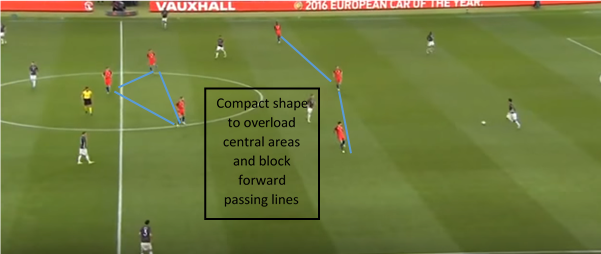
The front three should stay compact and narrow. As the ball is switched between centre backs, the winger from the defending team should shape up his approach to get into a passing line between the centre back in possession and a full back on his side. The central striker’s role is to come across and support from the side, screening the pass into opposition’s central midfielder. The winger on the opposite side needs to slide across and stay compact to provide cover.
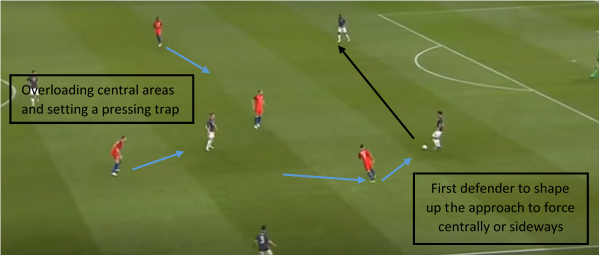
When the opposition manages to play into central areas, this might be a good opportunity to use a pressing trap as the defending team will have an overload there. The emphasis should be on immediate pressure on the ball and potentially doubling up to try and win the ball back or force it backwards.
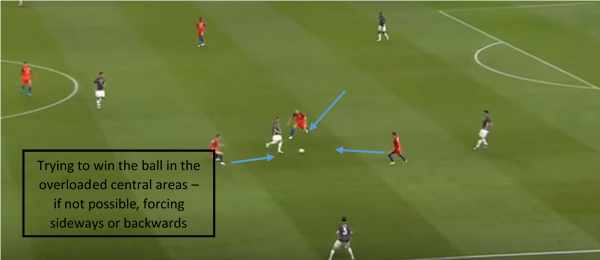
Another pressing trap might occur as the centre back in possession shapes up his body to play wide into the full back. As the winger cuts that passing option, central striker approaches from the other side making it difficult to play the ball back into the other centre back. This is supported by the opposite winger who should narrow up the spaces. The midfield three get compact and tight with the opposition central midfielders to prevent them from turning and hopefully win the ball back to counter.
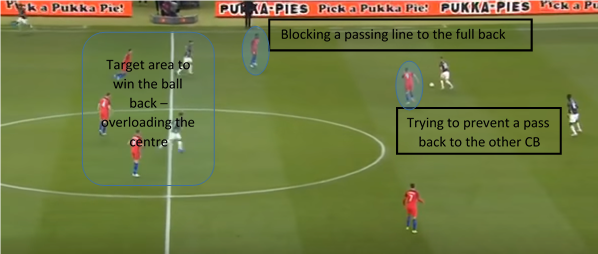
When the forward passing options are closed, and centre backs pressed appropriately, the ball will be played to the goalkeeper at some point. As the pass is made, central striker should apply immediate pressure on the ball. This will prevent the opposition from ‘resetting’ and reorganising and force them to play long. The opposition centre backs might drop deeper. This should be picked up by wingers who should follow and cut the nearest passing options for the goalkeeper. The rest of the team pushes up and stays compact.
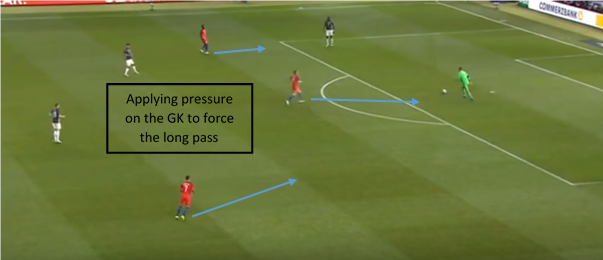
In case the opposition manages to progress through the thirds and get into the attacking half, the defending team might then choose to play with wingers forming a midfield five (4-5-1). This shows the flexibility of the system which can adapt defensive shape based on different areas where the ball is.
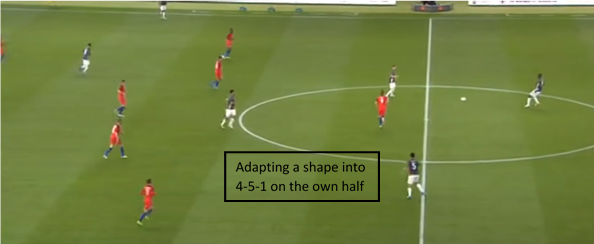
Having three forwards playing in line when defending from the front also provide great opportunities to counter attack upon winning possession. Even when the opposition chooses to play long, there will be a minimum of three players to use in front of the ball. It is crucial to pay attention to players away from the ball (back and midfield lines) as they will be responsible for defending direct play and initiating counter attack.
By Alex Trukan, Development Coach, Nottingham Forest
@AlexTrukan


